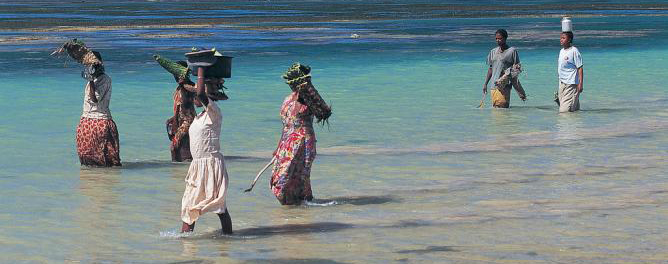
Photo:
The "Strengthening Comoros Resilience Against Climate Change and Variability Related Disaster" project (2018-2023) focused on strengthening the institutional, policy and regulatory frameworks to integrate climate and disaster risks into planning; improving knowledge and understanding of key climate drivers and natural disasters; and strengthening community resilience to climate-induced disaster risks.
- National
- National Governments
- United Nations Development Programme (UNDP)
- United Nations Development Programme (UNDP)
- Global Environment Facility (GEF)
Expected outcomes
Outcome 1 - Systemic and institutional capacities for the long -term management and adaptation planning of disaster risks caused by climate change are strengthened at local, provincial and national levels
Outcome 2 - Knowledge and understanding of medium- to long -term climate-related disaster risks and vulnerability are improved
Outcome 3 - The long-term resilience of the livelihoods and assets of vulnerable communities against climate disaster risks is strengthened
- Image

- Image

- Image

- Image

Comoros is highly vulnerable to natural disasters (floods, cyclones, volcanic eruptions, earthquakes and tsunami) and epidemics including cholera, dengue and chikungunya. In the last two decades in Comoros, 17 natural disasters were recorded with 148 deaths and more than 400,000 people affected. The biggest disaster was in 2005 when 245,000 people were affected by a volcanic eruption.
In addition, torrential rains, storms and floods have affected more than 117,000 people in the last two decades. Climate projections show that the situation faced by the Comoros in recent years could worsen. According to the IPCC, through projections of Atmosphere-Ocean General Circulation Model (AOGCM), the climate change scenarios for small islands in the Indian Ocean from 2040 to 2069 indicate an increase of the average annual rainfall to 3.1% (+ or -0.45%) .
The sea- level rise is expected to reach 20 cm by 2050 . Weather and climate extreme events such as cyclones, tsunamis are also expected to increase in frequency and intensity in the future. Therefore, it is likely that future tropical cyclones would gain intensity, that heavy rainfall and floods would be more intense during the hot season, that on the opposite droughts would be more intense during dry season and that land erosion would be exacerbated.
Among the factors of the Comorian populations’ vulnerability to natural disasters one can note the following:
- Natural factors: the insularity, the rugged topography with many steep slopes, combined with the natural and soil triggered waterproofing (lava flow) stimulate the runoff strength of rainwater, causing multiple erosions and flooding and leading to destruction of villages.
- Land-use planning: housing is often temporary and under precarious and anarchical conditions. The vulnerability of some areas is more acute because of their proximity to the sea that threatens to engulf houses built too close to the eroding coast, either as a result of rainfall, tides or because of sand removal used as construction material.
- Poor transport networks: transport networks are poor and were built without taking in account climate-induced disaster risks. The Union of the Comoros road network comprises 800 km of roads, of which approximately 50% is classified as in “good and fair” condition and almost 30% in “bad and very bad” by the National Roads and Road Transport Office (DNRTR). In several areas the road network is either partially or totally degraded. This situation makes road networks very vulnerable and easily degraded and/or not fully operational in the event of climate induced disasters and this contributes to increased vulnerability of the Comorian communities. In disaster situation they are cut off from health infrastructure and food supply including drinking water and hardly access to emergency relief.
- Weak socio-economic base of the community contributes a great deal to increase their vulnerability. The strengthening of the resilience of the Comorian communities to climate related natural disasters will in a long term require a profound change in the current practices of development planning and implementation. This will first require greater awareness of decision makers and a better understanding of medium- to long- term climate change risks. This will also require that human settlements, community basic infrastructure and economic development infrastructure be made more resilient to disasters induced by climate change through designing and implementation of effective prevention against natural disasters and the integration of climate change and disaster risk management in the development.
- UNDPJulien SimeryRegional Technical Specialist, Climate Change Adaptation
